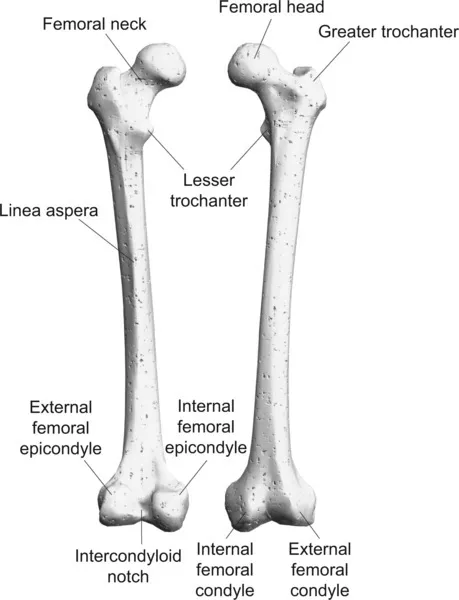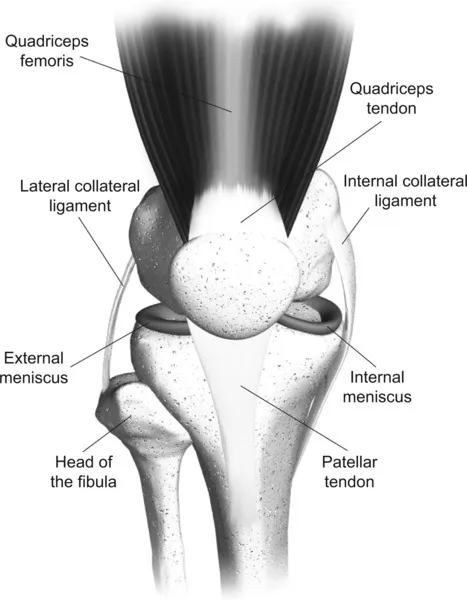
eBook - ePub
Surgical Techniques in Total Knee Arthroplasty and Alternative Procedures
- 298 pages
- English
- ePUB (mobile friendly)
- Available on iOS & Android
eBook - ePub
Surgical Techniques in Total Knee Arthroplasty and Alternative Procedures
About this book
Total knee arthroplasty (TKA) is commonly considered to be a reliable procedure, with high implant survival rates at 10 to 15 years of follow-up. The goal of total knee replacement surgery is to relieve pain and obtain better knee function. This is achieved by ensuring correct patient selection, pre-operative deformity, implant design and accurate surgical techniques. This book covers a range of techniques for the realisation of functional joint motion and stability. The first part of the book will describe fundamentals in total knee arthroplasty and alternative procedures. The second half will look at surgical techniques and considerations whilst the final chapters will address future trends and challenges in the field of knee surgery. This book will be an essential reference for academics, orthopaedic surgeons, and those training in medicine, physiatry and rheumatology.
Frequently asked questions
Yes, you can cancel anytime from the Subscription tab in your account settings on the Perlego website. Your subscription will stay active until the end of your current billing period. Learn how to cancel your subscription.
No, books cannot be downloaded as external files, such as PDFs, for use outside of Perlego. However, you can download books within the Perlego app for offline reading on mobile or tablet. Learn more here.
Perlego offers two plans: Essential and Complete
- Essential is ideal for learners and professionals who enjoy exploring a wide range of subjects. Access the Essential Library with 800,000+ trusted titles and best-sellers across business, personal growth, and the humanities. Includes unlimited reading time and Standard Read Aloud voice.
- Complete: Perfect for advanced learners and researchers needing full, unrestricted access. Unlock 1.4M+ books across hundreds of subjects, including academic and specialized titles. The Complete Plan also includes advanced features like Premium Read Aloud and Research Assistant.
We are an online textbook subscription service, where you can get access to an entire online library for less than the price of a single book per month. With over 1 million books across 1000+ topics, we’ve got you covered! Learn more here.
Look out for the read-aloud symbol on your next book to see if you can listen to it. The read-aloud tool reads text aloud for you, highlighting the text as it is being read. You can pause it, speed it up and slow it down. Learn more here.
Yes! You can use the Perlego app on both iOS or Android devices to read anytime, anywhere — even offline. Perfect for commutes or when you’re on the go.
Please note we cannot support devices running on iOS 13 and Android 7 or earlier. Learn more about using the app.
Please note we cannot support devices running on iOS 13 and Android 7 or earlier. Learn more about using the app.
Yes, you can access Surgical Techniques in Total Knee Arthroplasty and Alternative Procedures by Saverio Affatato in PDF and/or ePUB format, as well as other popular books in Biowissenschaften & Biologie. We have over one million books available in our catalogue for you to explore.
Information
Part One
Fundamentals in total knee arthroplasty and alternative procedures
1
The history of total knee arthroplasty (TKA)
S. Affatato Istituto Ortopedico Rizzoli, Bologna, Italy
Abstract
The knee is a diarthrosis joint composed of four bones: the femur, the tibia, the patella, the proximal part of the fibula. Articular conformity between the femur and the tibia is provided by two fibrocartilagineous discs: the external and internal menisci. The knee ligaments are the anterior and posterior cruciate ligament, the internal and external collateral ligaments, and the patellar tendon.
Current total knee arthroplasty is made up of a femoral component and a tibial component of cobalt–chromium alloys, and a platform/insert of polyethylene.
Recently, oxidized zirconium or ceramic femoral components were used in the development of new TKAs.
Keywords
Knee anatomy
Femur
Tibia
Insert
Prostheses
1.1 Knee anatomy
Due to its anatomical complexity, the knee joint has not been definitively classified. It is widely categorized as a ginglymus (hinge joint). However, another approach is to regard it as two different joints: the tibio-femoral joint and the patello-femoral joint (Fig. 1.1). The tibio-femoral joint can be further sub-divided into two condyle joints between each femoral and tibial condyle.

Figure 1.1 The tibio-femoral joint and the patello-femoral joint.
The patella can be found in front of the knee joint, a flat bone surrounded by the quadriceps tendon. The distal part of this tendon, called the patellar tendon, inserts into the tibial tuberosity connecting the patella with the tibia. The patello-femoral joint, an arthrodial (gliding) joint, allows the articular patella to glide over the patellar groove of the distal femur.
Therefore, in essence, the knee joint is a unique joint with three distinct components:
• the patello-femoral,
• the internal, and
• the external tibio-femoral compartments.
Enclosing the knee is the articular capsule, a fibrous membrane connecting the bones to each other.
Synovial fluid produced in the synovial membrane provides lubrication for the joint and supply of nutrient for the articular cartilage. The synovial membrane can be found on the internal surface of the articular capsule coating the articular cavity and, in particular, in the deep recess beneath the quadriceps tendon. The presence of ligaments and tendons ensures the stability of the joint. The most important ligaments of the knee are the anterior and posterior cruciate ligaments, the internal and external collateral ligaments and the patellar tendon.
The external and internal menisci are two fibrocartilaginous discs above each tibial condyle, which improve congruity between the femur and the tibia. They cover the outer part of the tibial articular facets. The menisci look like a wedge, being thicker toward the periphery of the tibial condyles. While the external meniscus is approximately circular, the internal meniscus has a semicircular shape. The external and internal menisci are connected anteriorly by the transverse ligament. The coronary ligaments, which are part of the articular capsule, connect the menisci with the tibia along its peripheral portion. The menisci cushion the compressive force and increase the stability of the knee, particularly the internal meniscus since it is tightly anchored to the bone (Gray 1918; Kapandji, 1998) (Fig. 1.2).

Figure 1.2 Representation of menisci anchored to the bone.
1.2 History of total knee arthroplasty (TKA)
The first attempt at treating patients affected by knee osteoarthritis was during the mid nineteenth century. This consisted of interposing a soft tissue between the joint surfaces or removing a portion of bone from both the distal femur and proximal tibia.
In 1880 the German surgeon Theophilus Gluck fixed ivory prosthetic components to the bone by means of plaster (Gluck, 1890); this can be regarded as the earliest example of total joint replacement. After that, no notable progress was made until 1973, when the prototype of the modern knee prostheses was proposed by John Insall and his colleagues (Insall et al., 1974). This prototype comprised a metallic femoral component and plastic tibial and patellar components, all fixed to the bone. The geometry of the prosthetic components ensured joint stability even if the cruciate ligaments were both sacrificed. All the components were fixed to the bone with cement, made of colophony, pumice and plaster of Paris.
Further progress occurred over the next few years, leading to the use of a metal back for the tibial component and posterior cruciate ligament retention. In the early twentieth century, interposition arthroplasty using autologous tissue or metallic components came to the fore and in 1950s the first tibia replacement was carried out by McKeever (McKeever, 1960). From then, the vision of knee arthroplasty took two different routes:
• the constrained (or hinged) prosthesis, and
• the condylar replacement.
In the condylar replacement knee prosthesis the distal femoral and proximal tibial bearing surfaces are substituted with unconnected artificial components with no direct mechanical link between them. The original design named the Freeman-Swanson prosthesis and proposed at the end of the 1960s at Imperial College, London, comprised a metal “roller” placed on the distal femur articulating with a polyethylene tibial tray. This first prototype required a re-section of both cruciate ligaments. Later, uni-compartmental knee arthroplasty was developed, involving the substitution of only one tibio-femoral compartment, with the aim of preserving part of the bone. Recent improvements have introduced newer bearings options and cementless fixing (Ranawat). The surgical performance and clinical outcome of knee replacement surgery is constantly being improved by computer-aided systems which assist the surgeon in accurately positioning the prosthesis. Due to its excellent long-term clinical results, knee replacement is a successful and promising procedure. Consequently, the rate of total knee replacement is expected to increase in the future (Culliford et al., 2010).
The aim of TKA is the re-establishment of joint function and the alleviation of pain. The main cause of joint impairment is primary osteoarthritis, a degenerative condition due to ageing. Another condition necessitating TKA is secondary osteoarthritis as a result of an altered load distribution around the knee, generally due to post-traumatic disorders (fractures of the distal femur or proximal tibia) or congenital anomalies producing varus or valgus alignments. Other indications for TKA include osteonecrosis of the femoral condyles (Radke et al., 2005), rheumatoid arthritis (Meding et al., 2004) and haemophilic arthropathy (Goddard et al., 2010).
1.3 Indications for a TKA
TKA is indicated when the knee joint is severely damaged by osteoarthritis, rheumatoid arthritis or other diseases. The primary purpose of TKA is to restore joint stability and relieve pain caused by severe arthritis. The pain should be significant and disabling. Loss of joint stability and chronic acute pain result in a significant reduction in the quality of life. Correction of significant deformity is another important indication but is rarely used as the primary reason for surgery. Generally, TKA is appropriate for older patients with more modest activities, as the TKA lifetime is finite and is adversely affected by higher activity levels (Ranawat et al., 1993; Ritter et al., 1994), (Canale ST and Beat...
Table of contents
- Cover image
- Title page
- Table of Contents
- Copyright page
- List of contributors
- Woodhead Publishing Series in Biomaterials
- Part One: Fundamentals in total knee arthroplasty and alternative procedures
- Part Two: Surgical techniques and considerations for total knee arthroplasty (TKA)
- Part Three: Future trends and challenges in total knee arthroplasty (TKA)
- Index